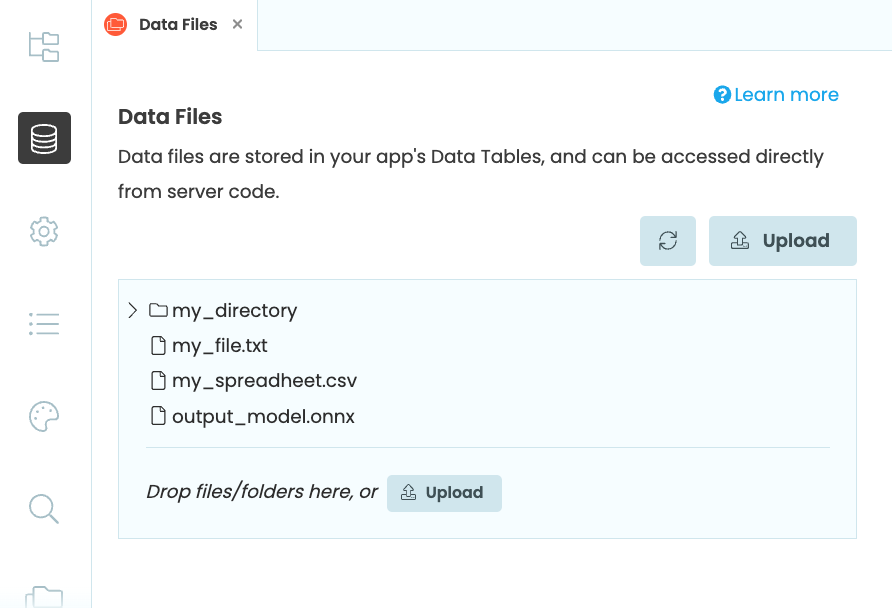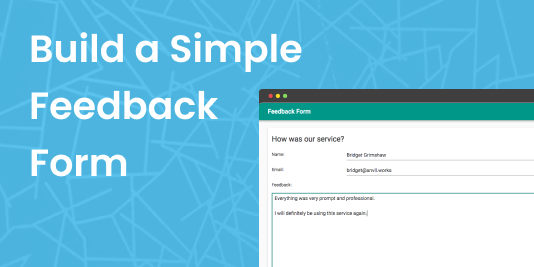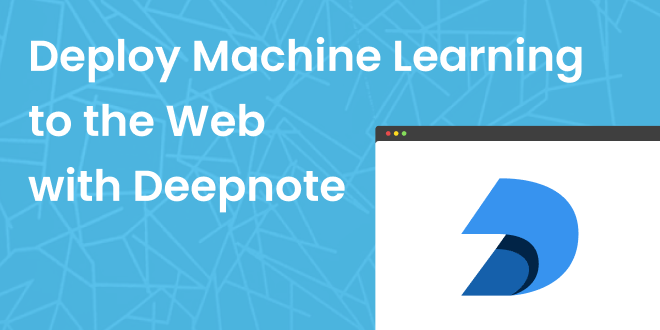The New Data Files Service
Python has lots of great libraries for interacting with files, large datasets and machine learning models. And today we are happy to announce a new feature in Anvil to make it easier than ever to use large files and machine learning models in your Python code. We are launching Anvil’s new Data Files Service.

The Data Files Panel
What are we releasing?
Data Files are files that you, as the app developer, can attach to your app. These files are available in your Server Modules. Data Files can be uploaded and accessed using the new built-in Data Files service.
There’s a new API to access and manage Data Files. Accessing files is as simple as using square brackets:
data = pandas.read_csv(data_files['my_spreadsheet.csv'])What can I use it for?
Any application that uses bulk static data! For example, you might build a dashboard that queries a CSV of static data using pandas. Or you might build an app around a machine-learning model, which loads a file of stored weights into PyTorch, Tensorflow or scikit-learn.
Get started right now
Check out our Quick Start guide to learn about using the Data Files Service.
Deploy a machine learning model
We’ve got a brand new tutorial to show you how to deploy an ML model and use it in your Anvil app:
More about Anvil
If you’re new here, welcome! Anvil is a platform for building full-stack web apps with nothing but Python. No need to wrestle with JS, HTML, CSS, Python, SQL and all their frameworks – just build it all in Python.
Learn More
Get Started with Anvil

Nothing but Python required!
Seven ways to plot data in Python

Python is the language of Data Science, and there are many plotting libraries out there.
Which should you choose?
In this guide, we introduce and explain the best-known Python plotting libraries, with a detailed article on each one.
Deploy data science to the web with Deepnote

Generate PDF Invoices with Python

Rapid Prototyping: Building Calendly in 3 Hours

 By
By